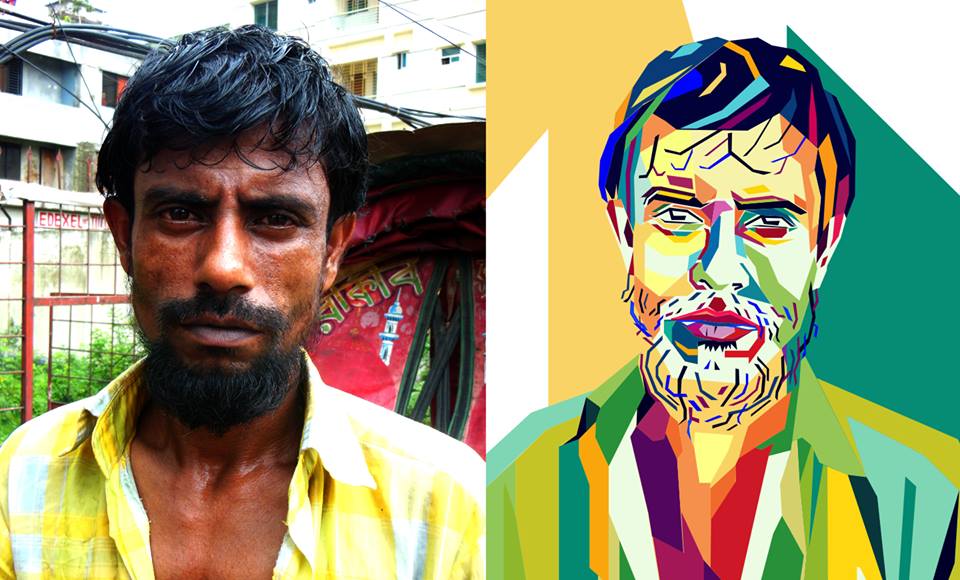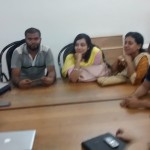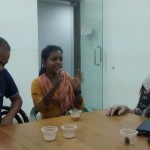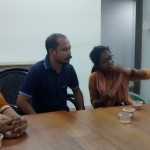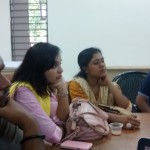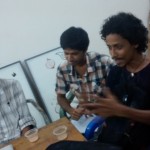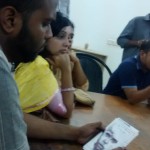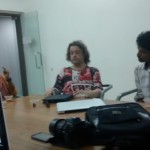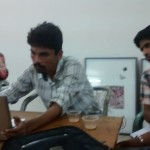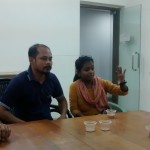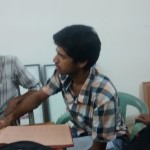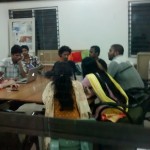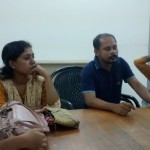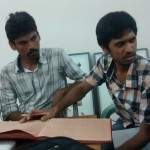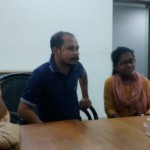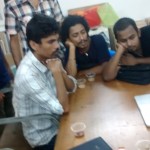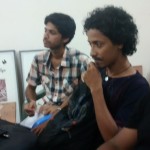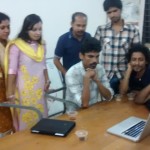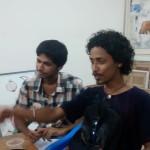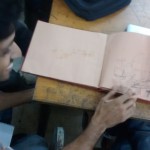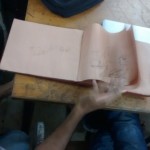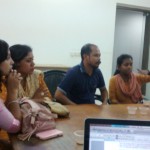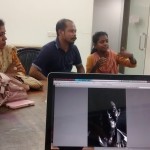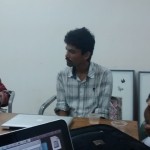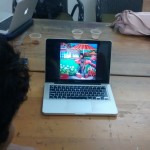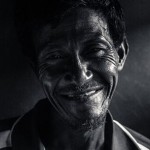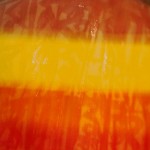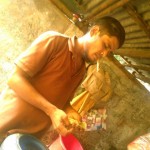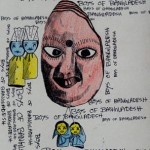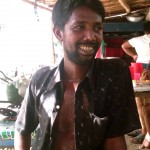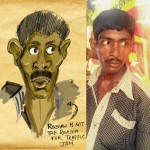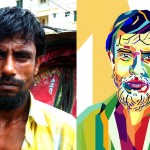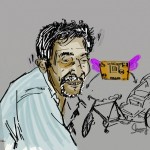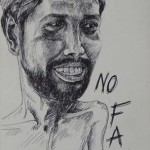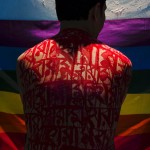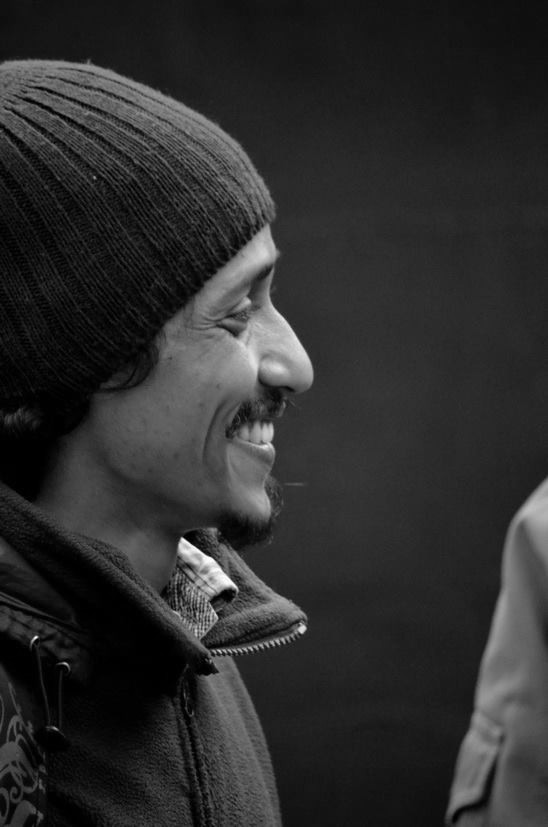Dialogue Dhaka art project 19-07
By Sabya van Elswijk,
– Samsul shows Hijra works. He is new to the group, and is thinking about the subject. Sumon introduces him, tells about his work with groups of people in Dhaka, he shows his work to us. He worked with people and portrayed them in his ‘love studio’, where they could portray their own dreams. All over Dhaka people live, he is thinking of working with different levels (poor, middleclass, rich) of people who live in the city. He will develop a plan the coming week.
– Martijn asks Ali what he did with his project this week. He said he asked friends to join and be his model fort his work. His first work is published in the online group. These are hate stories, written on the back of gay men, who can not show their face.
– Emran and Martijn made 50 portraits of both homeless and Rickshawdrivers, a whole process of getting to know them. Yesterday they went to the Rickshaw garage, and learned a lot about this work. One rickshaw costs 18000 taka, which is 180 euro. To rent this the drivers pay 80 taka per day, and they earn 300 taka per day. There is an amazing variety of people working there: people from outside Dahak earning some money. And the last days we went on the streets to portray crazy people, they did not talk, or not normal, maybe they were demented. Martijn shows the woman with her cats and dog, sleeping in the middle of the road, telling us she is the mother of all people. And the woman who is over 100 years old, and asked 10.000 taka for her portrait.
– Sumon has a concept, to work with the dreams of others. He will ask the people to make a drawing of their dream. They are more used to write about their dreams, not make it in a drawing. It is a different type of language. Martijn asks him who he will ask for their dreams. He will ask the suburban people.
– Aroni + Sabia+ Tonmoy Bhattacharjya have street musicians as a concept. She is meeting with them, this sunday or monday. Her father is coming with her, because she is is a girl and it is maybe Women are not allowed in majar. They have to get a permission. We can all go together at monday. There are musicians from the whole city, but they are vanishing, and with them the traditional Dhaka music. This is disappearing because of the sound systems. We will make photo’s, life stories, background, interviews. ‘Basically there stories are miserable, they earned a lot of money before, now they are just hoping to get some work.’
Kallol, Jhumu and Apurbo
– have a group, all working with the cleaners colony. They all have their own focus. Jhumu was looking in the slums where they live, and saw that many of them have Jhumu have worked with them some years before, for months on a time. ‘art comes from life.’ Jhumu also tells that she decided to quit her job to work on this more. She has written about them. Kallol: “I had an experience when I was young, that some woman was in the street before our house. My mother said ‘don’t mind her, she is a cleaner.’ I began wondering about them. They are cleaning the whole city, and where do they live? He met a cleaner and asked him where he lives. He answered in the street. And he explained that they come from India, they had their own language and culture. And here they are keep the whole city clean.”
– Emran, Khairul and Shamreen have the homeless and rickshawdrivers. Shamreen has to stop with the project unfortunately. Emran shows his work of the homeless boy, raising the question what is ‘homeless’? When you have no roof, when you sleep in the mud…?
Khairul tells about the meetings they had with people living on the street. Yesterday one man told them a lot about his life and his conceptions of life “the only home we have is a coffin.” Khairul has been drawing them, their faces, their lifes, the places where they live, and he portrayed them with the basket they use everywhere. ‘The basket is like their home.’ They work all night, and only sleep in the morning.
Martijn raises the question for next time how to organize an exposition as a Rizoom. He asks everybody to think about this, what they want to do, using the whole city as a rizoom. He sends a text on this to everybody.
Martijn is thinking about a place where everybody puts part of their work, for example the Dhaka art centre. We can use internet and a book as a showing of all the work together. And also expose the work in all places in the city that everyone choses. It could be giving the portraits to the people they are from, or any other way. Let’s all think about our ideas, and post them on facebook, next week we discuss.
Who likes to design a logo? That we can use as a recognition point throughout the city. Everybody makes some kind of a logo, and post them on facebook, next week we discuss.
Kallol suggests to ask Rickshaw drivers to show our work / logo, Aroni suggests a music studio. Martijn says it is about the interaction between art, artist and viewer. And that is too much channeled by galleries and their curators right now. So any other possibilities we can explore, the showing of the work bein part of the art. Sumon wants to exhibit his work everywhere outside. Emran suggests to make a rickshaw with all the rickshaw photos on it.
Sumon asks everybody to contribute on facebook. And also send your story and picture to sabya@thefaketory.org to put on the website, where many people worldwide visit daily.
Next week we meet again at 4 PM in Dhaka art center.
